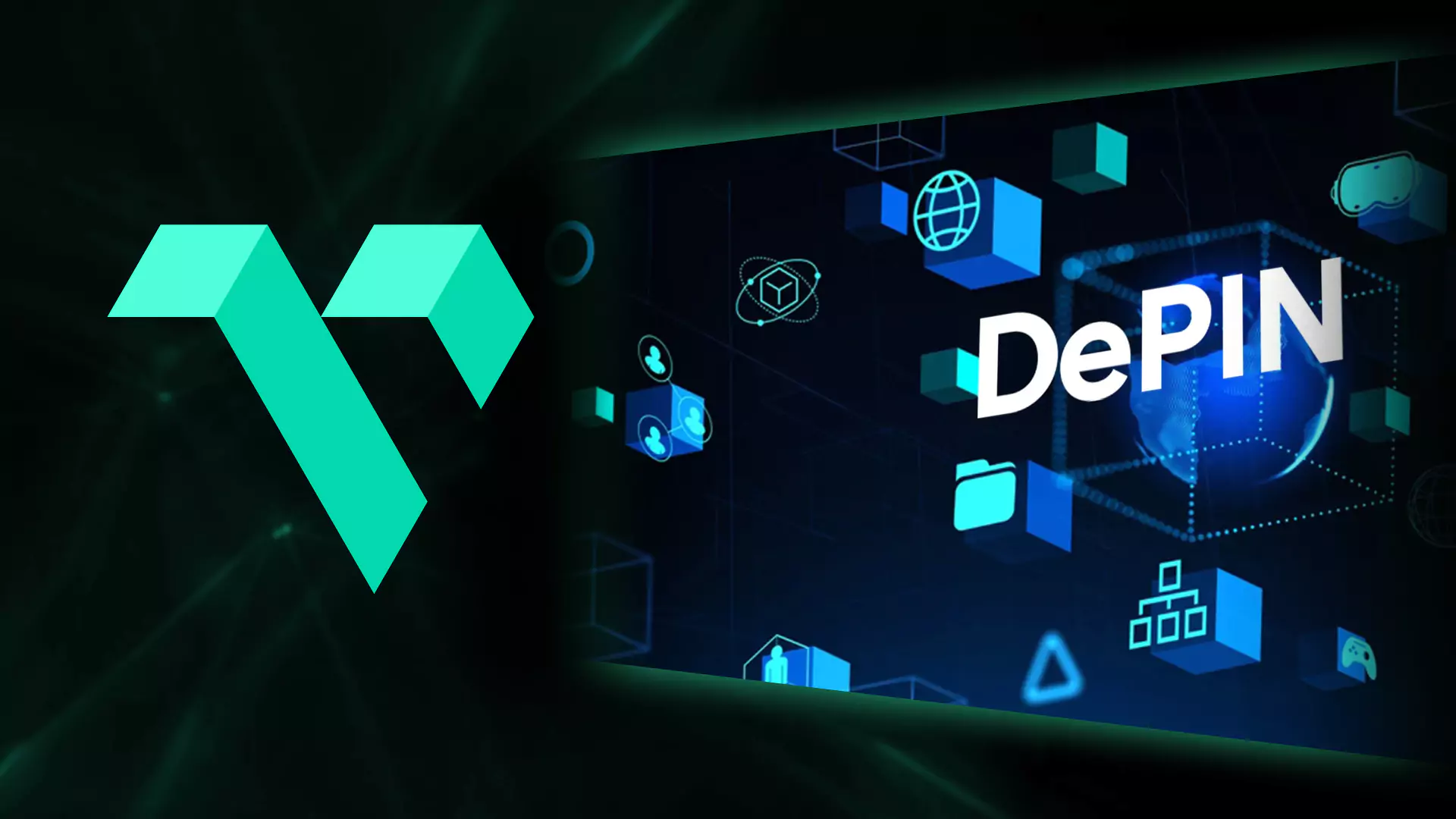

In the rapidly evolving landscape of blockchain and decentralized technologies, Decentralized Physical Infrastructure Networks (DePINs) are emerging as a transformative force. HTX Research and Messari forecast the DePIN sector to skyrocket, starting from a hefty $2.2 trillion today to an astonishing $3.5 trillion by 2028. By leveraging the power of blockchain, DePINs offer a more transparent, efficient, and secure way to manage and operate physical infrastructure. This blog explores the intricacies of DePINs, how they work, and the profound impact they can have on various industries.

Before diving into the mechanics and benefits of DePINs, it’s essential to understand what DePIN is. DePIN stands for Decentralized Physical Infrastructure Network. It is a framework that utilizes blockchain technology to decentralize the management and operation of physical infrastructure. Unlike traditional centralized systems, DePINs distribute control across a network of participants, ensuring greater transparency, efficiency, and security.
DePIN connects physical facilities to the blockchain through three main components:
DePIN crypto refers to the integration of cryptocurrency within Decentralized Physical Infrastructure Networks (DePINs). In these networks, cryptocurrencies serve as vital instruments for facilitating transactions, incentivizing participation, and ensuring the seamless operation of decentralized systems. DePIN crypto tokens can symbolize various assets or utilities within the network, such as ownership rights, access to resources, or rewards for contributions to the infrastructure. For instance, in a decentralized energy grid, participants might earn DePIN crypto tokens for generating and supplying renewable energy, which they can subsequently trade or utilize to pay for services within the network. This incorporation of cryptocurrency not only enhances the efficiency and transparency of transactions but also cultivates a robust and self-sustaining ecosystem by aligning the incentives of all participants.

Traditional physical infrastructure management is often plagued by inefficiencies, lack of transparency, and vulnerability to security breaches. Centralized systems can suffer from single points of failure, bureaucratic red tape, and corruption. DePINs address these issues by leveraging the decentralized nature of blockchain technology.
At the core of DePINs is the principle of decentralization. Unlike traditional networks managed by a central authority, DePINs distribute control across a network of nodes. Each node in the network has equal power, and decisions are made collectively. This decentralized approach ensures that no single entity can control or manipulate the system.
Smart contracts are self-executing contracts with the terms of the agreement directly written into code. In DePINs, smart contracts can automate a wide range of tasks, from maintenance scheduling to payment processing. This automation reduces the need for intermediaries, cutting costs and improving efficiency. For example, a smart contract could automatically release funds to a contractor once a certain milestone is achieved and verified.
Tokenization is another critical aspect of DePINs. Tokens can represent ownership, access rights, or other assets within the network. These tokens are often traded on decentralized exchanges, providing liquidity and enabling easy transfer of assets. For instance, in a decentralized energy grid, tokens could represent units of energy that can be bought, sold, or traded among participants.
Blockchain technology ensures that all records are immutable, meaning they cannot be altered once recorded. This immutability is crucial for maintaining the integrity of the network. In a DePIN, every transaction, contract, and change is permanently recorded on the blockchain, providing a verifiable audit trail. This feature is particularly valuable in industries where trust and verification are paramount.

One of the most promising applications of DePINs is in the energy sector. Traditional energy grids are centralized and often inefficient. DePINs can decentralize energy production and distribution, allowing individuals and businesses to generate, store, and trade energy locally. This approach can lead to significant cost savings, improved energy efficiency, and reduced carbon emissions.
For example, a DePIN could enable households with solar panels to sell excess energy directly to their neighbours, bypassing traditional utility companies. Smart contracts could automate these transactions, ensuring timely payments and delivery.
Supply chains are another area where DePINs can make a substantial impact. Traditional supply chains are complex, involving multiple intermediaries and prone to inefficiencies and fraud. By using DePINs, every step of the supply chain can be recorded on the blockchain, providing end-to-end visibility and traceability.
For instance, in the food industry, a DePIN could track the journey of a product from farm to table, ensuring that all safety and quality standards are met. Consumers could scan a QR code to see the entire history of the product, enhancing trust and transparency.
Telecommunications infrastructure is typically managed by large corporations, leading to monopolies and high costs. DePINs can decentralize the management of telecom networks, allowing smaller providers to participate and compete. This decentralization can lead to lower costs, improved services, and increased innovation.
A DePIN could enable peer-to-peer communication networks where users share bandwidth and resources. Token incentives could encourage participation, ensuring network reliability and performance.
The transportation sector can also benefit from DePINs. Traditional transportation networks are centralized, often leading to congestion and inefficiencies. DePINs can enable decentralized ride-sharing, autonomous vehicle coordination, and more efficient logistics.
For example, a DePIN for ride-sharing could connect drivers and passengers directly, without the need for a central platform like Uber or Lyft. Smart contracts could handle payments and dispute resolution, reducing costs and improving service quality.
Filecoin offers decentralized data storage through a peer-to-peer network. Users can become storage providers by staking FIL tokens. FIL is used for payments, incentivizing providers, and ensuring network integrity.
Render provides GPU processing for tasks like 3D rendering and AI training. Service providers with spare GPU capacity earn RNDR tokens. Both providers and users have reputation scores. Render moved from Ethereum to Solana in November 2023.
Theta Network delivers decentralized data storage, content delivery, and computing services. Providers share storage and bandwidth. It uses two tokens: THETA for governance and staking, and TFUEL for operational payments.
While DePINs offer numerous benefits, they are not without challenges. Scalability is a significant concern, as blockchain networks can become slow and expensive as they grow. Interoperability between different DePINs and traditional systems is another challenge that needs to be addressed.
However, ongoing advancements in blockchain technology, such as layer 2 solutions and cross-chain protocols, are helping to overcome these challenges. As these technologies mature, the adoption of DePINs is likely to accelerate, bringing about a new era of decentralized, transparent, and efficient physical infrastructure management.
DePINs represent a significant evolution in the management of physical infrastructure. By leveraging blockchain technology, they offer a more transparent, efficient, and secure alternative to traditional centralized systems. From energy grids to supply chains, and telecommunications to transportation, the potential applications of DePINs are vast and transformative.
As we continue to explore and develop this exciting technology, the question is no longer what is DePIN but rather how soon will DePINs become the standard for managing physical infrastructure. The future of decentralized networks looks bright, and DePINs are at the forefront of this revolution, paving the way for a more connected and efficient world.